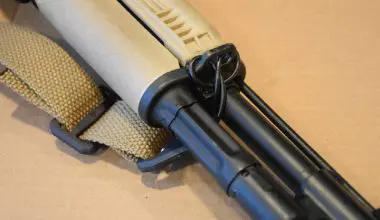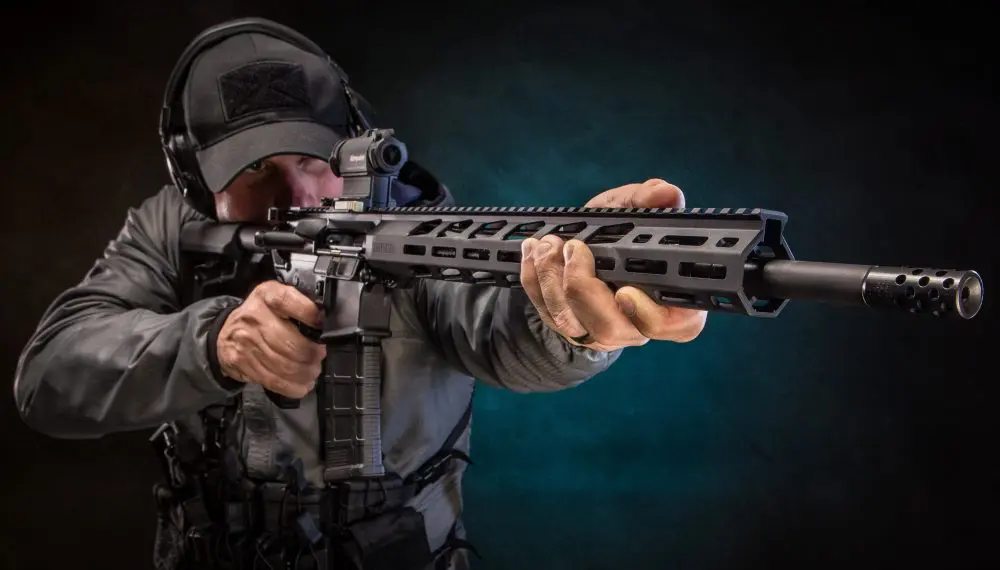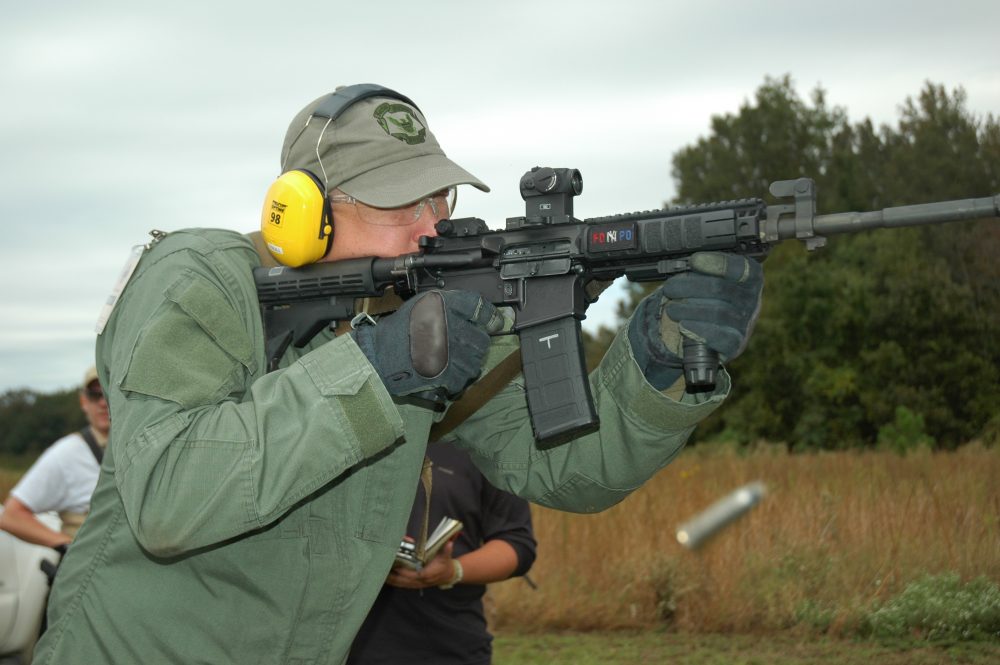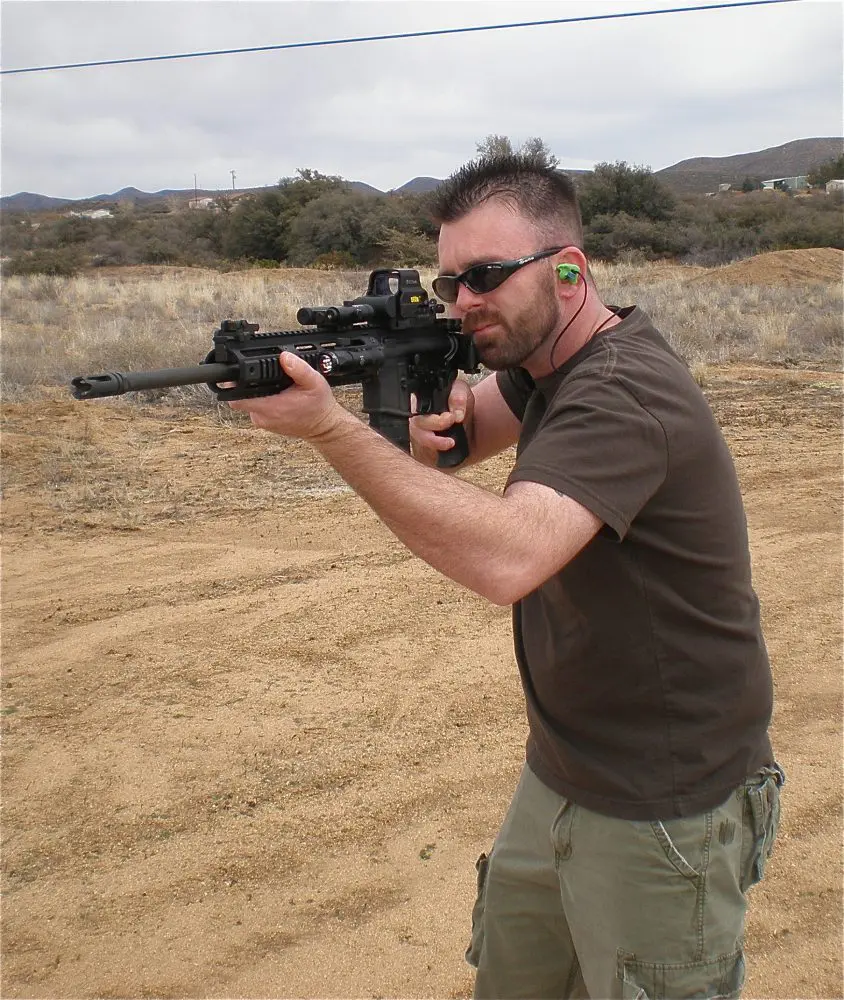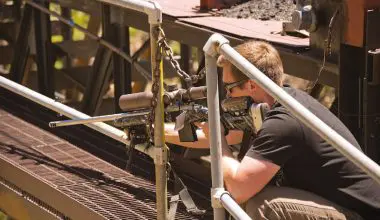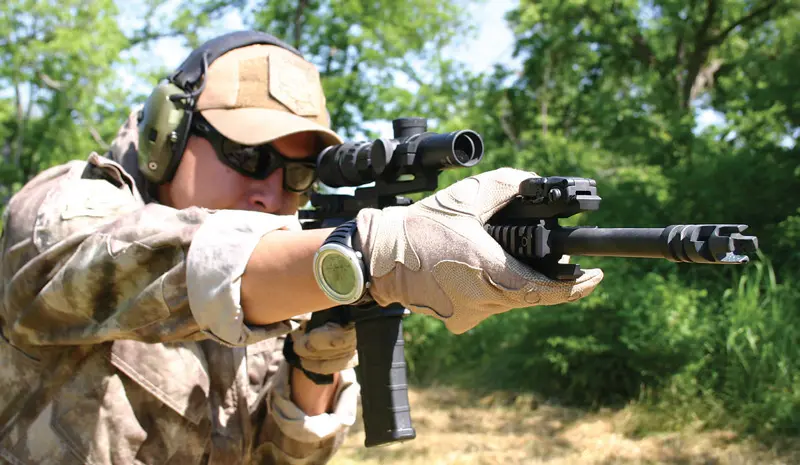
Over the last 25 years, the AR platform of rifles has reached the prolific status it has deserved since Eugene Stoner brought about its concept some 55 years ago. It’s more popular now than ever, and why not? It’s the fighting weapon of choice for militaries, police forces, and citizens worldwide.
Times change, and while the direct gas-impingement system is probably at its zenith—and will serve most shooters adequately—there are those who prefer something arguably more reliable. As such, piston-driven ARs are making their way into more and more arsenals. It’s a want, not a need, and no justification is needed.
Several different piston ARs are on the market, as well as a few piston kits to retrofit a DI gun. Not all use the same piston design. The well-known HK 416 and LMT MRP use a short-stroke piston. On the other hand, the PWS MK1 and MK2 series use a long-stroke system similar to that of the Kalashnikov.
Table of Contents
PRIMARY WEAPONS SYSTEMS
Known for their excellent muzzle devices as well as feature-packed enhancements to established rifles, PWS began making uppers in 2009 and complete rifles in 2010.
I am going to review the PWS MK114 in 5.56x45mm caliber. This model has a 14.5-inch barrel and permanently attached 1.51-inch muzzle device, for a total of 16.1 inches to keep it at the minimum legal length.
In addition to 5.56mm, the MK1 series of rifles is also offered in 7.62x39mm and the increasingly popular .300 Blackout. Other barrel lengths include 10, 12, 16, and even a little hellraiser known as the Diablo, which has a barrel length of seven inches.
At first blush, when looking at the rifle on PWS’s website, I noted that it was well thought out as to how it was built and what features were included. Speaking to Stacy Nagy at PWS, he said they wanted to include things on the rifle to make it more functional, so that buyers would spend less money on the rifle itself and could spend more money to shoot it.
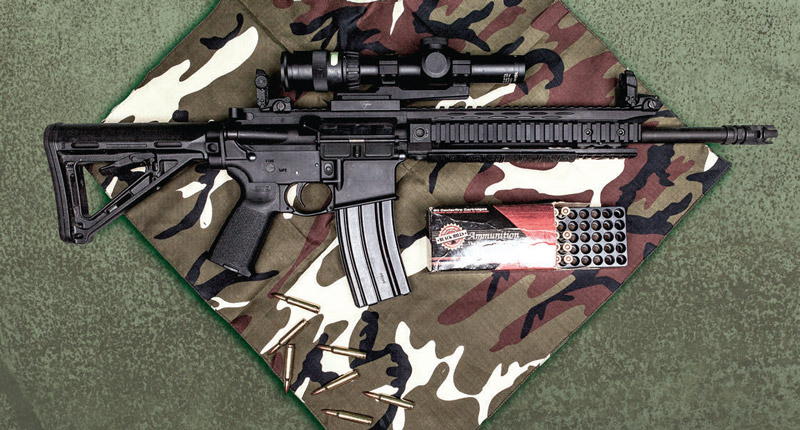
THE BARREL
PWS wanted their rifles to have a dual purpose. The MK114 really embodies that vision, as it’s short enough to be an effective fighting rifle and accurate enough to reach out to extended ranges of 400 meters and beyond should the shooter be capable.
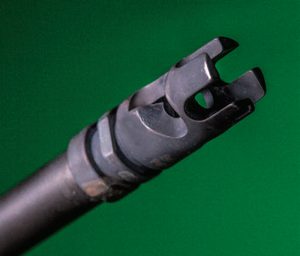
The barrel is machined in-house and starts off as a pre-honed 415 Bergara stainless steel blank that has a 1:8 twist and button rifling. The 1:8 twist offers the shooter the ability to use both light and heavy bullets.
The barrel is then given a relatively low-temperature Isonite treatment, at 660 degrees, on both the inside and outside of the barrel. Isonite is in the same realm of durability as Melonite. Once the treatment is complete, it has a Rockwell hardness of 64-68.
The Isonite process negates the need to over bore and chrome line the barrel, which reduce the accuracy potential of a barrel. Because the Isonite process leaves the bore with an extremely hard surface, it also eliminates the need for a break-in session.
Topping the barrel off is PWS’s own SM556 muzzle device. The SM556 is a suppressor-mountable version of their popular FSC556, which allows for the attachment of different brands of suppressors. It also serves as a flash-suppressing compensator, though the ATF considers it a compensator for those who live in states that still adhere to the absurd 1994 Assault Weapons Ban in regard to flash hiders. Should you desire a pure flash suppressor, you can optionally have the new PWS Triad flash suppressor installed.
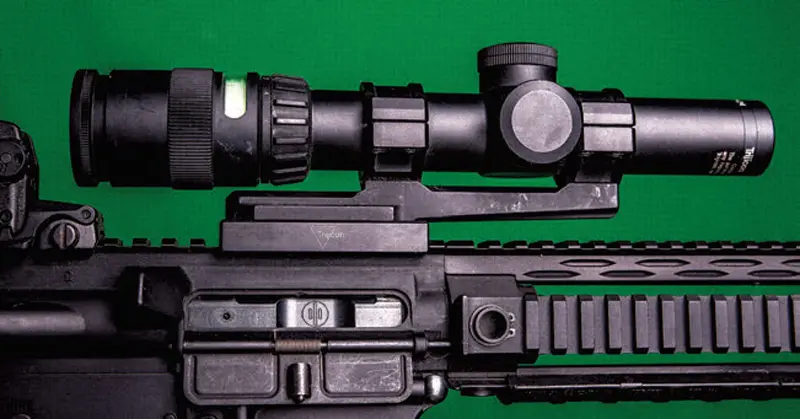
PISTON SYSTEM/BOLT CARRIER GROUP
PWS admires the Kalashnikov system and was looking for a way to combine the best attribute of the AK, its longstroke piston, with the AR’s inherent accuracy. This is why they are bucking the trend and using the long stroke instead of a short stroke.
The PWS long-stroke system uses three individual pieces that all operate as one part. The operating rod is pinned to the piston, which is in turn pinned to the bolt carrier group.
A dwell chamber is located inside the gas block, which slows down the gas pressure on the op rod. Any gas pressure not needed to cycle the rifle is bled out via a port. When the piston is at its farthest travel, the venting occurs that allows the gases to expand and thus slow down.
The MK114 bolt carrier group (BCG) uses a magnetic particle inspected bolt made from a high nickel content alloy. The bolt is spring loaded within the carrier. The milspec 11-coil extractor spring and black insert are also installed. The carrier itself is made of S7 grade tool steel and Isonite treated for corrosion resistance.
Topping the BCG off is a Bravo Company Mfg Gunfighter Charging Handle, specifically the MOD 4.
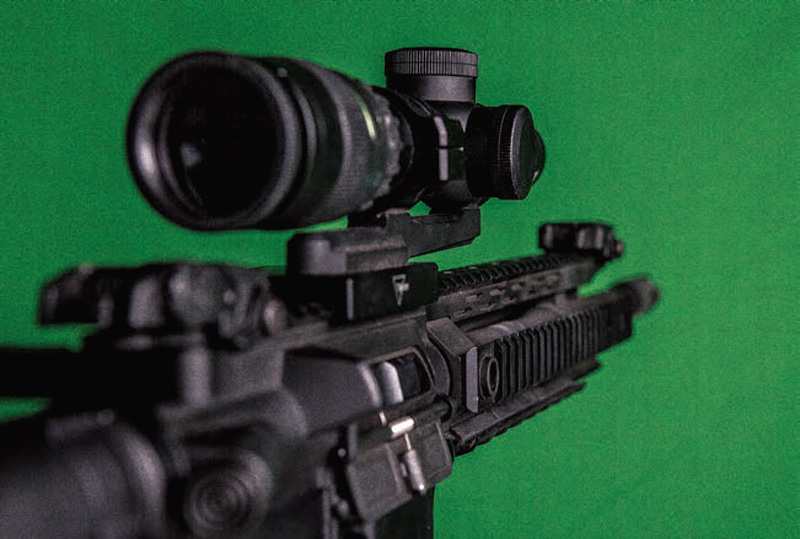
UNIQUE RAIL SYSTEM
The PWS MK114 is a little unusual in that the way the rifle was designed, it wasn’t possible to use free-floating rails. Instead an ingenious set of four individual M1913 rails were utilized.
The three, six, and nine o’clock rails are all identical in length and have the same quick-detach points for slings. They are attached at the rear trunnion and the gas block via three Torx screws per rail. In the rare event that a rail should be damaged, it can be replaced at under $49.95 instead of replacing the entire handguard. To protect the unused portion of the rails, a three-pack of Magpul XT rail covers is included.
The 12 o’clock rail is longer and has a slightly different method of attachment, yet the price is the same as the other three. The additional length gives the supplied Magpul MBUS Gen 2 front and rear sights a longer sight radius while keeping the front sight away from the hot gas block.
Even though the rifle uses four individual rails acting as one, the setup remains lightweight and very rigid. In fact when compared with other ten-inch rail systems, the PWS setup is actually lighter. Some will worry about the effect this will have on the inherent accuracy of the rifle, but I hope to dispel those concerns with the accuracy testing performed later on.
LOWER RECEIVER
The PWS lower receiver utilizes the company’s proprietary extension known as the Enhanced Buffer Tube. It replaces a normal milspec buffer tube with a 6061 extruded aluminum buffer tube. The PWS EBT also completely eliminates the castle nut and the need to stake it.
Because of the materials used, the PWS EBT is slightly heavier than a normal aluminum buffer tube, but this puts more weight toward the shooter and helps reduce the felt recoil of the rifle. The EBT also features a dead blow buffer in the rear of the tube to further dampen recoil impulse.
It’s hard not to notice the tube’s fluting, which allows the stock to be closed and extended even when there is debris between the stock and tube, and the quick-detach points machined into the tube at around the four and six o’clock positions.
Internally, a milspec parts kit is installed. The trigger, of single stage design, weighed in consistently at 7¼ pounds. This is well within military specifications and, while a bit gritty, smoothed out very nicely after shooting it for awhile.
Rounding out the lower is a Magpul MOE grip and enhanced trigger guard.
OPTIC AND MOUNT
My optic of choice was the Trijicon Accupoint in 1-4X24. This optic allows the shooter to go from a true 1X, which is desired for engagements within 50 meters, up to 4X, which works well for out to 500 meters.
The Accupoint’s tube is built of a robust 6061-T6 aluminum that has been MIL-A-8625 hard anodized with a nonreflective Type 2 dull finish. It weighs in at a bit over 14 ounces and is a little over ten inches in length. This will make it heavier and longer than some would like, but I believe the performance difference is worth the trade off.
The reticle is a green triangle. The Accupoint is powered by fiber optics when light is available and can be dimmed by rotating a hood over them. When no light is available, the Accupoint has its own Trijicon tritium onboard to provide a light source.
I mounted the 1-4X24 Accupoint in a Trijicon branded, Bobro Manufactured TR-126 extended eye relief, quick-release mount. This mount offers just the right height for the AR platform and moves the optic about ¾ of an inch forward, thus clearing the MBUS rear sight. The mount is made of the same 6061-T6 aluminum and has a Type 3 hard coat anodizing. It weighs approximately 7½ ounces.
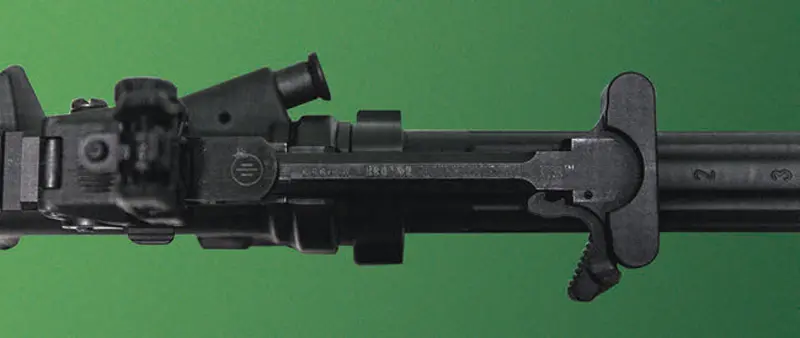
SHOOTING IMPRESSIONS
Because of the company behind its design, I expected big things from this rifle and wanted to run it hard and get it dirty. I started grabbing samples of various .223 Remington and 5.56 ammunition, obtaining samples of ammunition from Black Hills while other shooters brought Wolf Performance, Lake City M855 and M193, as well as Hornady TAP. The bullets ran the gamut from 55 up to 77 grains, with both brass and steel cases.
The first range session consisted of 300 rounds to get the rifle sighted in with both the MBUS and Trijicon Accupoint. No failures of any kind occurred, and all shooters noted the reduced recoil impulse for a piston rifle. All felt it was lighter than many direct impingement rifles.
A second range session took place at an outdoor range known for its sandy conditions. We fired rapid controlled rates and plinked out to 400 meters. Another 350 rounds were fired, again with no failures of any kind.
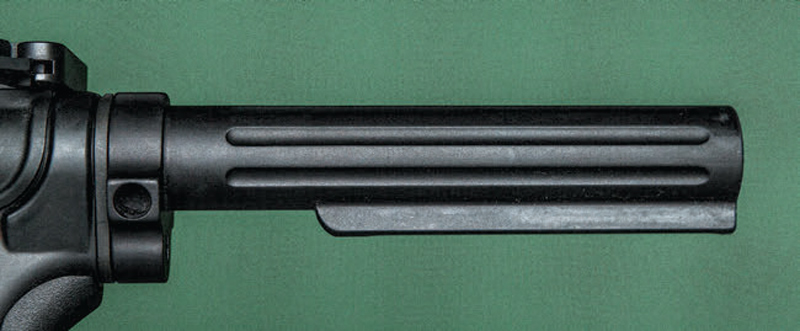
THIRD RANGE SESSION
On a blustery north Texas afternoon, several shooters of many different backgrounds got together at a private range to shoot the MK114. Targets were set up at 10, 15, 25 and 50 meters. Magazines were stacked high, and included Magpul PMAGs and USGI 30-round aluminum magazines of various manufactures. Chris Bass of Bass Arms brought along his Class 3 lower to attach to the PWS MK114 upper, hoping to give it a real workout.
The first shooter, a former Marine Force Recon member and sniper, stepped up to the plate with 600 rounds of 62-grain WPA Wolf Military Classic ammo and set out to run multiple drills. Other shooters joined in and, in just over an hour, the entire 600 rounds were expended with no failures.
After we let the rifle cool off for all of about five minutes, another shooter, a retired U.S. Army infantryman, donated another seven mags worth of Lake City M855. There were no failures in this string either.
Our first shooter was ready to give it another go with more WPA ammo. This time he decided to have a little fun by doing a pair of magazine dumps and then returning to his drills. Another 340 rounds of WPA through the rifle without fail, and we were only three hours into the range session!
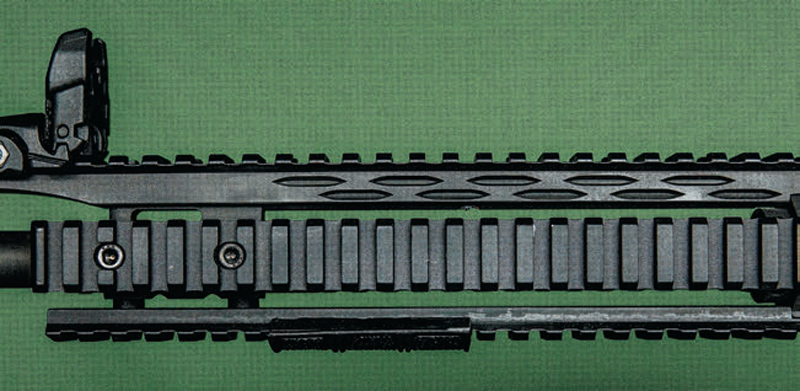
Other shooters had loaded mags ready to go, so the rifle cooled for only about a minute. Then a couple mags of M193 followed by a few loaded with Hornady TAP were put through the rifle. No problems were noted with either of these rounds. The gun was hot though, and without the supplied rail covers it would’ve been difficult to handle even with gloved hands.
At this point, the rifle had 1,600 rounds of various grain weights, in both brass casings and polymer-coated steel, through it. I had to remove the upper from the Class 3 lower because it was time for Mr. Bass to take his full-auto lower home.
This offered an opportunity to get a look at the bolt, bolt carrier, chamber, and piston. I was pleased to see the bolt as clean as it was. None of the dreaded case sealant from the WPA ammo was present, and there wasn’t any excess carbon buildup that looked like it had been spackled on. I reassembled the MK114 upper and lower without cleaning or applying more lubricant.
ACCURACY
With the scope on the rifle, I decided to get the rifle and scope sighted in at a local 50-meter indoor range. I put my selection of Black Hills Ammunition through the rifle to see what it liked. The first round I chose was the excellent 69-grain Sierra Match King bullet. After a handful of very tight groups, I noticed that at 50 meters I would get four very tight rounds and a keyholed round. I thought that perhaps it was a weight of bullet that the rifle didn’t like, so I moved up to the 77-grain Open Tip Match (OTM). After a few excellent groups, the same problem occurred.
I called both Black Hills and Primary Weapons and discussed the issue with them. Both companies immediately agreed to the return of their products.
After a few days, I got a call from the folks at PWS stating they had located the problem with some copper fouling that my copper cleaner wasn’t taking care of. PWS detail scrubbed the bore and barrel, cleaned the rest of the rifle, and sent it back to me. No other issues popped up after another 600 rounds downrange.
I fired some groups from the bench at a local indoor range with a 50-meter bay. The rifle certainly showed a preference for some types of ammo. It did not like older M855 or the new MK318. But it shot phenomenally with Black Hills remanufactured 75-grain OTM and their new 77-grain OTM. What wasn’t expected was the rifle’s like for old 55-grain Wolf FMJs.
That said, 50 yards isn’t the best indicator of a rifle’s ability. I met up with one of the previous shooters at a very primitive range. The grass was very high due to recent heavy rains and we were forced to fire standing from behind a bench with the rifle on a bipod. This hampered accuracy, but the PWS MK114 still showed it is a very capable carbine.
At 100 meters, the same rounds were fired as at the indoor range. Firing while standing, the groups were larger than what I would’ve liked, but the rifle still exceeded government standards for accuracy in the M4. The MK114 still didn’t like the M855 or MK318, shooting about 3½- to 4-inch groups. But the BH loaded 55-grain Barnes TSX shot well under two inches, as did their remanufactured 75-grain OTM and the 77-grain OTM. The BH loaded 69-grain SMK and WPA 55 grain were on par, coming in at right around 2½ inches.
CONCLUSIONS
I firmly believe PWS has a winner here. The MK114 is a well-thought-out, wellengineered carbine that offers many innovations not found elsewhere. My fellow shooters and I found its light weight and low recoil impulse make it a joy to shoot.
We found the MK114 more than accurate enough to shoot man-sized targets out to 500 meters. It can produce stellar accuracy within the typical ranges of a carbine, especially if properly benched. As with any firearm, find the firearm/round combination that works best for you, and roll with it.
Finally the MK114 works, and works well. Through the entirety of this testing, no rifle-related malfunctions were experienced. It chugged right along without cleaning or extra lube needed. Right now the total round count through this rifle is around 3,200, and there are other PWS rifles with far higher round counts that note the same high level of performance.
If you’re looking for a piston-operated AR, look no further than the PWS MK1 series.
